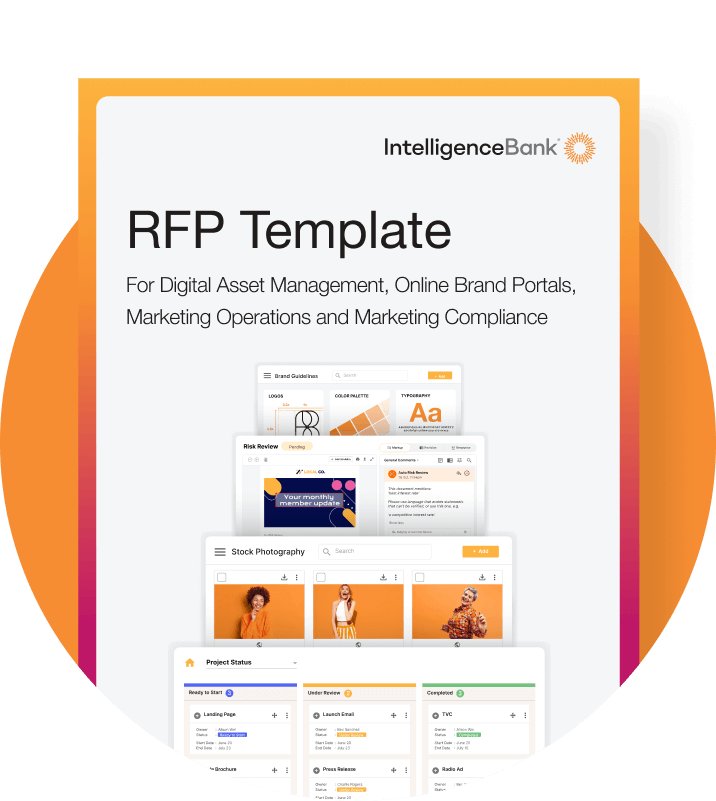Rebranding can be one of the smartest moves a business makes — shedding outdated associations, enhancing positioning, and increasing market share. But it’s rarely simple. If the strategy nosedives mid-flight, you risk confusing loyal customers and eroding the equity you’ve built up over time.
When going through a rebrand, first, you must identify whether it’s strategically necessary. Then, you need the right tools to support your workflows from planning to post-launch.
In this guide, we’ll break down how to decide if a rebrand’s worth pursuing, how to implement the rebranding process, and which tools can make life a whole lot easier when you’re in the middle of the soup.
Understanding When It’s Time To Rebrand
As a brand grows and develops, it earns emotional investment from loyal customers over time.
Changing your brand’s identity can feel like a spanner in the works, impacting the consumers who have built those emotional attachments.
This means rebranding isn’t a move you make on a whim. It needs to be a strategic, thoughtful decision that serves your internal direction as much as it responds to existing and new market needs. Below are some common reasons a business might consider a rebrand:
Mergers, acquisitions, or leadership changes
When two businesses become one, you’ve got a choice: Blend, absorb or restructure your brand architecture. Either way, it’ll create ripples. A fresh rebrand signals a time of change while protecting the equity both names have built. To achieve that, you need alignment between your internal vision and external image.
Leadership changes — especially if they bring a new vision or growth strategy — might also trigger a rebrand. Identify the core stakeholders who need to have input in the project and determine what equity is worth preserving. The rest is fair game for reinvention.
Market repositioning
Repositioning is often necessary when your business strategy has evolved or you’re ready to claim new ground. Even without obvious issues, your existing brand may not reflect where you intend to compete or grow.
A rebrand can clarify your market position and bring you up to speed with shifting consumer expectations. The challenge is to adjust brand messaging, design, and experience to bridge business priorities and competitive realities. At the same time, you need to maintain consistency for existing audiences.
Targeting new markets or locations
Expanding into a different region or demographic often means assessing how well your existing brand translates to different audiences and environments. What works in one may not resonate in another.
A good rebrand supports your market entry by addressing cultural nuances, competitive context, and local expectations. That way, you connect meaningfully from the start. Whether you shoot for regional sub-brands or campaigns — or a more flexible core identity — revising your brand strategy helps avoid fragmented messaging and brand dilution as you scale.
Changes in brand purpose, mission, or values
Companies evolve. When an organization’s purpose or values mature, its brand should reflect those shifts. A rebrand in this context creates alignment between what the company stands for and how it presents itself to stakeholders. Injecting your presence and message with sensible priorities demonstrates where you’re heading and why it matters.
Public relations crisis
Sometimes, a rebrand provides a structured way to address reputational challenges and refocus attention on future growth. You don’t have to position it as damage control, though. A rebrand can function as a reset point for messaging and strategy. Clarify what’s changed and where your new business trajectory will take you, while strategically retaining key elements of equity where it matters most.
Your brand feels outdated
A proactive audit is good practice, even when things are going well. If you find that visuals, messaging, or customer experience are behind the curve, updating them with a partial rebrand helps convey energy and forward momentum.
This doesn’t necessarily require a full-blown overhaul. Revising key elements such as color palette or UX flow can bring your presence up with the times without compromising equity. The objective is to look ambitious and reduce friction when attracting new customers, partners, or talent.
Adding new products, services, or business lines
When your portfolio grows, your brand needs to stretch with it. If new offerings don’t fit cleanly under your existing brand umbrella, you risk confusing audiences and thinning out your positioning.
A rebrand or adjustment to your brand architecture allows you to clarify the relationships between your offerings and business divisions. It keeps your portfolio clear and scalable without the operational complexity. Set structural benchmarks early and build out the rest as you grow.
Do you need a complete rebrand or a refresh?
In some cases, you need a fresh coat of paint, not a whole new house. Knowing the difference — and which situations call for action — is all part of strategic brand management. Here’s how to tell which is right for your business:
- Brand refresh: If you’re entering new spaces, modernizing, clarifying your niche or dialing up your presence, a refresh might do the trick. This generally involves minor tweaks like tighter messaging or a website glow-up.
- Rebrand: If you’re shaking up the foundations — business model, market or mission — a rebrand can set you up for what comes next.
How to Rebrand a Company in 3 Stages
Any rebrand is a strategic recalibration that protects what’s working and divests what isn’t. Implemented well, it’ll set you up for what’s coming next without hemorrhaging equity. Here’s how to tackle it methodically:
1. Planning the rebrand
Start with the ‘why’
Get crystal clear on why you’re rebranding. A complete overthrow should answer a very real business need. Set your internal benchmarks early. These will act as a compass throughout the planning and implementation process, as well as post-launch. Consider the following questions:
- Which outcomes would signal a successful rebrand?
- How will we measure shifts in customer perception and engagement?
- What internal changes do we need to see to call this a win?
- How does a rebrand support our long-term business goals?
Laying these out early keeps your rebranding project anchored in purpose and steers you clear of expensive cosmetic detours.
2. Define your target audience segments
Not every brand will speak to everyone — nor should it. Break down your key audiences, including current and those you want to build a relationship with. Be specific: Are you targeting new demographics, verticals, and geographies, or do you want to deepen engagement with your existing base?
These questions can help you clarify:
- Who are your best current customers, and what do they care about?
- Which new audience segments offer growth potential?
- How do customers perceive your brand now?
- What would successful rebranding look like for each segment after the fact?
These insights shape your direction in how you position messaging, which channels you use, and how you prioritize engagement. Data accumulated around audience perception and objectives should steer every aspect of your branding, from creative choices to content formats, so each touchpoint connects audiences to your goals.
Audit your brand
To determine what needs to change, you need a clear view of what you’re working with.
Catalog your:
Catalog your:
- Current brand assets.
- Website and digital profiles.
- Messaging and positioning statements.
- Marketing and sales collateral.
What still holds up? What feels off? Gather feedback from stakeholders — customers, employees, partners — to identify blind spots and risks. This should also reveal opportunities worth taking and equity worth protecting.
A brand management software with asset management capabilities keeps your assets organized and searchable on one platform, simplifying the audit stage. For one, it spares teams the agony of digging through old folders to build a clear picture of your assets, and second, it’ll significantly reduce your audit timeline so you can move ahead faster.
3. Establishing your new brand identity
Define your brand voice
Are your brand’s mission, purpose, and values changing? Or only some aspects of them? The goal here is to redefine your brand personality. Its character influences how audiences will feel when the brand name pops up. Map this out early, because it impacts a lot of stakeholder interactions, including:
- Marketing campaigns
- Customer support language
- Recruitment ads
- Internal messaging
- Public relations
- Legal disclaimers
Set up your value statements, messaging pillars and brand guidelines early. This foundation determines both how you communicate outwardly and how audiences engage with you in return.
Refresh your visual identity
Once you’ve defined your voice, it’s time for the visual rebrand. Here, you might look for a new logo, typography, or brand colors that work hard to reinforce your message. Expect timelines and opinions to multiply here. To mitigate delays, consider implementing a centralized system that brings stakeholders who need input together in one place. This will help collect feedback and lock in decisions quickly, while backflipping through a notoriously gridlocked stage of rebranding.
Look for a platform that keeps visual elements (colors, fonts, logo rules) and brand voice easily accessible for creative teams. This will help ensure consistency — reinforcing trust — as you create and disseminate marketing materials for your new brand.
Lastly, shoot for visuals that slot into where your brand is heading, not just what looks good in the market today.
Create a rebranding strategy
If you’ve made it this far, take a minute to give yourself a pat on the back. You’re nearly at deployment. But first, you need to define how you want to roll out. When a rebrand project gets to implementation, there are a ton of balls in the air, and your job is to ensure none of them drop.
Think of this as your project’s GPS navigation. In one consolidated document, map out:
- Rebranding objectives
- Leadership and ownership
- Priority audiences
- Internal and external communications plans
- Key timelines and milestones
- Budgets and resourcing
- Legal checks (hello, trademark updates)
- Which metrics you’ll track
Involve marketing, operations, and leadership early to surface potential roadblocks lurking in the background. This is also a good time to be realistic about what needs to happen now and what you can phase in later.
We’ve put together an comprehensive editable checklist covering a full range of tasks to help you and your team take a considered, structured and systematic approach. Download it below.
3. Implementing your new brand
Engage internal teams
Before making anything public, engage stakeholders and explain what’s changing, why it matters, and how it affects them. Early employee buy-in creates alignment and minimizes confusion. Share updated values and resources to help them adapt. Provide implementation plans and field any questions to establish internal clarity from the start.
Roll out your marketing strategy
You can bring rebranded campaigns to market gradually with a soft launch or in one fell swoop. If you choose to test your new branding slowly, you can gauge early reactions and tune up your strategy before scaling. If any part of your rebrand implementation raises a red flag, resolve the issue quickly.
Alternatively, you might fully execute across your consumer touchpoints. Either way, don’t forget to continue monitoring metrics like sentiment, brand awareness, and sales lift as you go. This will keep you ahead of any potential road bumps down the line.
Engage customers
A transparent, accessible rebranding announcement about the new direction makes consumers feel considered and maintains trust. This step is critical for bringing loyal customers along for the ride and protecting equity. Share your new brand story through social posts, website updates, and emails — and anticipate their questions.
Track metrics post-launch
A rebrand isn’t over as soon as new brand assets go live — that’s where the game truly begins. Keep an eye on how your new brand identity performs in-market to evaluate whether your brand identity resonates with new and existing customers. Track metrics such as:
- Brand sentiment
- Campaign results
- Website engagement
- Internal benchmarks
Qualitative assessments in focus groups, surveys, and social listening provide valuable insights into how consumers perceive your rebranding. Regular measurement — especially early on — helps you course-correct, protect brand equity, and ensure your rebranding squad can confidently moonwalk out of the project.
Common Mistakes and How To Avoid Them
Rebranding is a big move, which means it comes with risks. Knowing what challenges to expect helps you plan in advance and dodge bullets before they fire.
Here’s what tends to trip brands up during a makeover:
- Losing brand identity: Change too much, and you risk weakening the connection people already have with you. Think evolution, not revolution. Protect your core values and identity while updating what no longer works.
- Overcomplicating the process: Trying to fix everything at once will stretch teams thin and hinder progress. Keep your scope clear: Focus on updates that directly support your brand goals and save the extras for later.
- Changing everything at once: Launching every single brand update on the same day sounds efficient, but in reality, it’s more likely to overwhelm your audience. A staggered launch gives you breathing room to test and adapt as you go.
- Not measuring success: Why invest in a rebrand if you’re not going for impact? Monitor the right data points as you implement, so you know what’s landing and where you need to pivot.
To learn more about industry or market-specific risks, look into competitors’ rebranding efforts to learn about what’s worked well (and what hasn’t) in your market.
How Brand Management Tech Can Support Rebranding
Leaning on the right technology can position your rebranding efforts — and new brand identity — on a completely different playing field. Robust brand management software simplifies everything from audits and creative collaboration to consistency across digital marketing channels. Here’s how:
- Simplified collaboration: When it comes to your visual rebrand, a brand portal enables you to centralize revisions, annotating and commenting directly on assets for more dynamic team collaboration.
- Marketing consistency: Within a brand portal, teams have instant self-service access to full color systems, fonts and logo usage rules — including sizing and spacing. You can even add creative templates so designers don’t have to build assets from scratch every time. This makes it much easier to visualize and utilize brand identity elements.
- Streamlined workflows: A centralized, intelligent platform keeps your assets stored, organized, and easily searchable without having to dig through old folders. Moreover, version control eliminates confusion around which assets are actually approved for campaigns, saving teams time as digital marketing rolls out.
- Scalable solutions: The right brand management tech should flex with your needs — whether you’re growing your team, the volume of content you’re producing, or both.

Make Your Rebrand Strategic
A rebrand is a big move — one that comes with risk if it’s not planned and executed strategically. The simplest way to manage that risk is by setting clear benchmarks, engaging stakeholders early, and using the right tools to keep the project aligned. IntelligenceBank’s brand management platform makes it easier to streamline approvals, centralize assets and track performance as you plan and implement your new brand.
If you’re gearing up for a rebrand, now’s the time to get your systems and strategy sorted. Reach out to our team to learn how we can help simplify your rollout and protect your brand equity through every stage.





